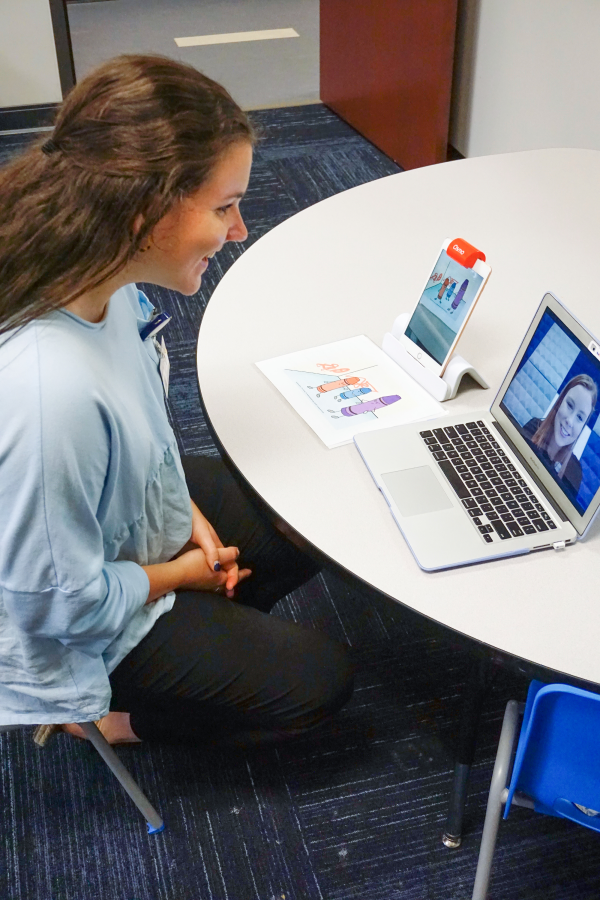School of Communication Sciences and Disorders
Clinicians Overcome Hurdles of Virtual Diagnostic Screenings with New Tech and Creativity
by Hannah Rae Vaden
Not being able to see clients in person has created unique challenges for Speech-Language Pathologists (SLPs) this year. They have channeled their creativity to develop new methods for service delivery. Virtual diagnostic sessions have their own unique challenges that differ from teletherapy sessions. Furthermore, COVID disruptions have created a backlog of diagnostic testing appointments. Memphis Speech and Hearing Center (MSHC) SLPs developed and are honing new methods for completing diagnostic testing via telehealth. We sat down with two of our clinicians, Katherine Mendez and Justine Steele, to learn more about how they are offering diagnostic services online.

There are unique challenges in providing remote diagnostic testing. Standardized tests used for language and articulation evaluations were not initially designed to be given virtually. These tests often require a client to point to an answer which is difficult to see when you are not in person. It can also be difficult to keep the attention of some of the younger and more easily distracted clients when not working face-to-face. To address these issues, MSHC clinicians modified standardized tests for virtual administration along with using language samples, observations, and parental report to complete evaluations.
To use print materials, MSHC clinicians have modified an iPad to function as a projector with an attachment called an Osmo that allows pictures on a flat surface to be recorded without having to tilt the iPad or flip the camera around. This allows the clinician and the client to view an image simultaneously. Using tablets and phones as projectors allowed clinicians to use test materials that are not available digitally. They also allowed clinicians to replicate collecting a language sample using a wordless picture book. They were able to project the book and turn the pages as the client created a story from their home while looking at the shared pictures.
Parents are playing a significant role in helping the clinicians gather diagnostic data. Some have provided language samples by sharing videos of their child in conversation so the clinician can assess the child's typical interactions. The clinicians have also requested that parents complete the Language Use Inventory, a standardized parent report measure. The option to provide the assessment online is helpful for families who have multiple children home from school due to COVID-19 and who might otherwise have trouble getting to a diagnostic session. Parents have also assisted clinicians in observing a child interacting with written materials by calling the SLP on their cell phone, and through Facetime, providing another view of the child during a session.
While virtual diagnostic sessions help clients access services, clinicians must do a lot more to prepare for them. Clinicians typically speak with parents before the date of the evaluation in order to discuss the technological requirements and to obtain a preliminary case history so that the clinicians can prepare the necessary diagnostic materials before the evaluation. Tele-practice is making diagnostic evaluations accessible during the pandemic but they require the active and creative participation of the clinicians, clients, and their caregivers.
